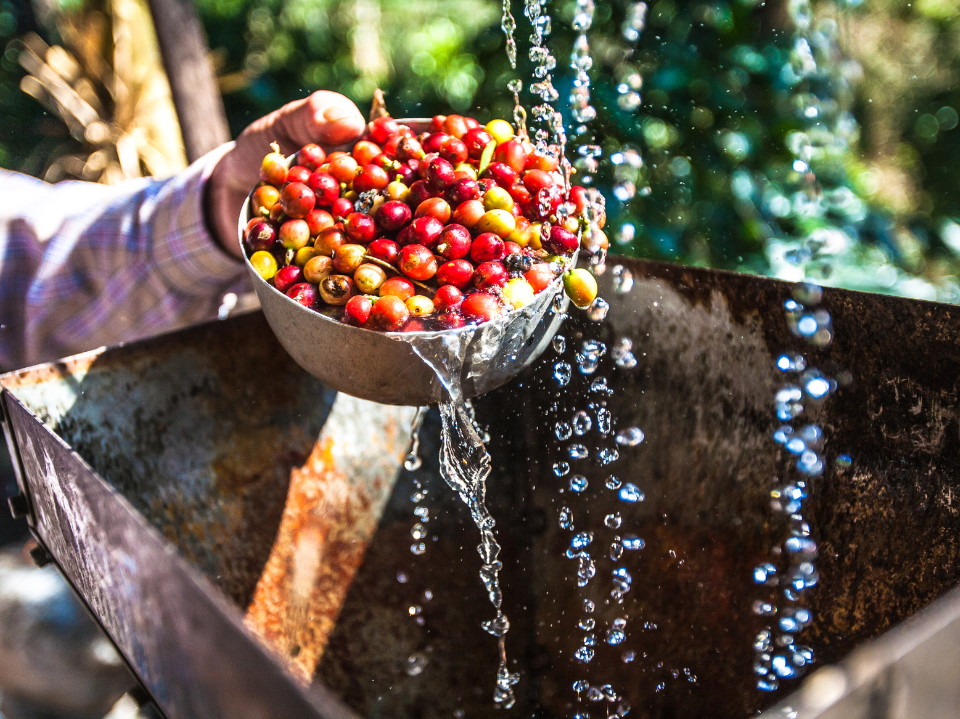
How Is Coffee Grown & Processed? A Full Guide
The Journey from Bean to Cup: Understanding Coffee Processing, Cultivation, and Harvesting
Coffee, a beloved beverage enjoyed by millions worldwide, undergoes a complex journey from seed to cup that significantly impacts its flavour, quality, and ultimately, our coffee-drinking experience. Understanding this journey—from cultivation and harvesting to processing and milling—is key to appreciating the rich diversity of coffee flavours and the craftsmanship involved in producing a perfect brew.
Coffee Growing Regions
Coffee is cultivated in various regions worldwide, each known for distinct flavour profiles influenced by climate, altitude, and soil conditions.
Latin America
Latin American coffees are celebrated for their balanced flavours and smooth profiles. Countries like Colombia, Brazil, and Costa Rica are renowned for producing high-quality Arabica beans. Colombian coffee, for instance, is known for its mild acidity and caramel sweetness, while Brazilian coffee often exhibits chocolatey and nutty notes. Costa Rican coffee is prized for its bright acidity and clean, crisp flavours.
Africa
Africa is a continent where some of the most distinctive and prized coffee varieties originate. Ethiopia is considered the birthplace of coffee, and Ethiopian coffees are famous for their complex fruity and floral flavours. Kenya and Tanzania produce coffees known for their bright acidity and wine-like flavours, often with berry undertones.
Asia-Pacific
Countries in the Asia-Pacific region, such as Indonesia, Vietnam, and India, produce coffee with earthy, spicy, and herbal notes. Indonesian coffees, like those from Sumatra, are known for their full body and low acidity, often displaying flavours of tobacco and herbs. Vietnamese coffee is often robust and has a chocolatey flavour, while Indian coffees, particularly those from the southern region of Karnataka, are known for their well-balanced profiles.
Stages of Coffee Cultivation
The journey of coffee begins with its cultivation, which involves several stages crucial to the health and quality of the coffee plant.
Seed to Seedling
Coffee plants start their life as seeds, which are planted in nurseries. The seeds require fertile soil and specific climate conditions, such as high altitude, consistent rainfall, and well-drained soil. In the nursery, the seeds germinate and grow into seedlings under careful supervision.
Sapling to Mature Tree
Once the seedlings are strong enough, they are transplanted to fields where they grow into mature coffee trees. This growth phase requires ongoing care, including pruning to promote healthy growth, fertilisation to ensure proper nutrient levels, and pest control measures to protect against insects and diseases. The health and yield of the trees are influenced by factors like climate, soil quality, and the farmer’s expertise in maintaining optimal growing conditions.
Harvesting Methods: Hand-Picking vs Mechanised Harvesting
The method of harvesting coffee cherries has a significant impact on the final quality of the coffee beans.
Hand-Picking
Hand-picking is the traditional method of harvesting coffee cherries, where skilled workers selectively pick only the ripe cherries. This method ensures that only the highest-quality cherries are harvested, as only ripe cherries contribute to the flavour complexity and sweetness of the coffee. Hand-picking is more labour-intensive and requires skilled labour, making it a more expensive method of harvesting.
Mechanised Harvesting
Mechanised harvesting involves the use of machines to harvest coffee cherries quickly. While this method is less selective and may include some under-ripe or over-ripe cherries, it is more efficient and reduces labour costs. Mechanised harvesting is often used in large-scale coffee production, particularly in regions where labour costs are high, or labour availability is limited.
Coffee Processing Methods
Once harvested, coffee cherries undergo processing to remove the outer layers and reveal the beans inside. There are several processing methods, each affecting the flavour profile of the coffee.
Natural (Dry) Process
In the natural process, cherries are dried whole, allowing the beans to absorb flavours from the fruit as they dry. This method results in a coffee with a heavy body, fruity sweetness, and complex flavours. Natural processing is common in Ethiopia and Brazil, where the climate is conducive to sun-drying the cherries.
Washed (Wet) Process
In the washed process, cherries are pulped to remove the outer skin, and then the beans are fermented to remove the mucilage. This method produces a cleaner, brighter cup of coffee with more pronounced acidity, as featured in our decaf coffee beans which are decaffeinated and Colombian mountain water processed. Washed processing is popular in Central and South America, and East Africa, where water resources are more abundant.
Honey Process
The honey process is a hybrid method where some or all of the mucilage is left on the bean during drying. This results in a coffee with a unique sweetness and flavour profile that falls between natural and washed coffees. Honey processing is increasingly popular in countries like Costa Rica and El Salvador, where it is known as "miel" processing.
Drying and Milling
Drying
After processing, coffee beans must be dried and milled to prepare them for export. Proper drying is crucial to prevent mould and ensure the beans' quality. Drying methods include sun-drying, where cherries are spread out on patios or raised beds to dry naturally under the sun, and mechanical drying, which uses machinery to speed up the drying process. Each method affects the flavour of the beans, with sun-dried beans often having a fruitier and sweeter profile, while mechanically dried beans may have a cleaner, more uniform taste.
Milling
Milling is the process of removing the dried parchment layer from the beans and sorting them based on size and density. The beans are graded according to quality standards and prepared for export to coffee roasters around the world. Sorting and grading ensure that only the highest-quality beans reach the market, maintaining the reputation and consistency of coffee from each region.
Shop with Primo Caffe, experts in Coffee Production
In conclusion, the journey of coffee from bean to cup is a complex and intricate process that involves careful cultivation, selective harvesting, meticulous processing, and precise milling. Each stage plays a crucial role in determining the final flavour and quality of the coffee we enjoy.
For example, Primo Caffe's Original Cafe Blend decaf coffee beans is processed using Colombian Mountain Water. This method preserves the coffee's natural taste and aroma, reflecting the craftsmanship of traditional coffee cultivation.
Try it today and enjoy the complexity of our Italian style coffee beans. Explore our range of meticulously selected coffee beans and accessories and elevate your coffee experience today!

